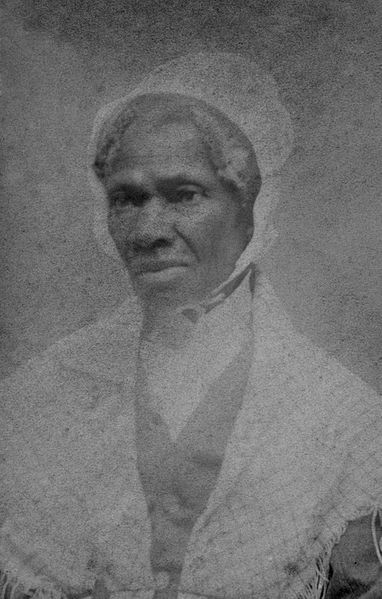One particular connection between the abolitionist movement and the women's right movement appeared in George Bourne’s Slavery Illustrated in Its Effects upon Women, published in 1837. It highlighted the connections between the anti-slavery and women’s rights movements, as some women abolitionists, such as Sarah and Angelina Grimke, used the anti-slavery cause to address their own plight as women. The connections they drew were highly controversial, and many anti-slavery organizations were split over the issue of women’s rights.
Women involved in the early abolitionist movements also began to demand equal rights to their own lives and experiences, advocating for expanded education, employment and political rights including suffrage. The 1848 Seneca Falls convention was one of the key early moments in the suffrage and women’s rights movement in the US. The convention was organized primarily by a group of Quaker women during a visit by Lucretia Mott, a Quaker woman well known for her role in the abolition movement and advocacy for women’s rights. The convention brought together 300 people, men and women, and produced a strong Declaration of Sentiments advocating for women’s equality including the right to vote.
 |
Sojourner Truth an emancipated slave became a prominent abolitionist and women’s rights advocate.
|
The role of Black women in the suffrage movement was also problematic at times. For example, both emancipated women who had previously been slaves and free women of color were active in the abolitionist movement, but as the women’s movement grew, there was often resistance on the part of the increasingly middle class, educated, white leadership to include Black women. For example, while Sojourner Truth spoke at the Women’s Convention in Akron Ohio in 1851 there were conflicting reports over how the speech was received. Some claimed delegates welcomed both the speaker and message, and others claimed that delegates were hostile to having a Black speaker address them.
sources:
https://courses.lumenlearning.com/boundless-politicalscience/chapter/slavery-and-civil-rights/
http://www.nolo.com/legal-encyclopedia/content/truth-woman-speech.html
This post was really interesting! I never thought of the women's movement and abolitionism as two connected concepts. I found an online article celebrating the Seneca Falls Convention - it's called "5 Things You May Not Know About the Seneca Falls Convention." I thought that learning a little bit more in depth about
ReplyDeletethis was really cool.
http://www.huffingtonpost.com/rebecca-price/5-things-you-may-not-know-about-the-seneca-falls-convention_b_7818812.html
I found this post to be detailed in explaining what the issues that existed for women during the mid 1800s as far as suffrage. What was interesting was that these women were campaigning for suffrage of mostly white women rather than all women. They even went as to argued for separate race-based unions for women's rights, and demanded that at least one white woman is in each union. The campaigns of both abolitionism and women's suffrage were united towards the end of the 19th century, where women were more actively a part of social reform and arguing for voting rights and equal rights like men. Black women specifically were one of the most tight-knit groups of women arguing for their suffrage because they were barred from voting for both their race and gender. They took on roles of educating more women across the country.
ReplyDeleteSource:
http://www.wesleyan.edu/mlk/posters/suffrage.html